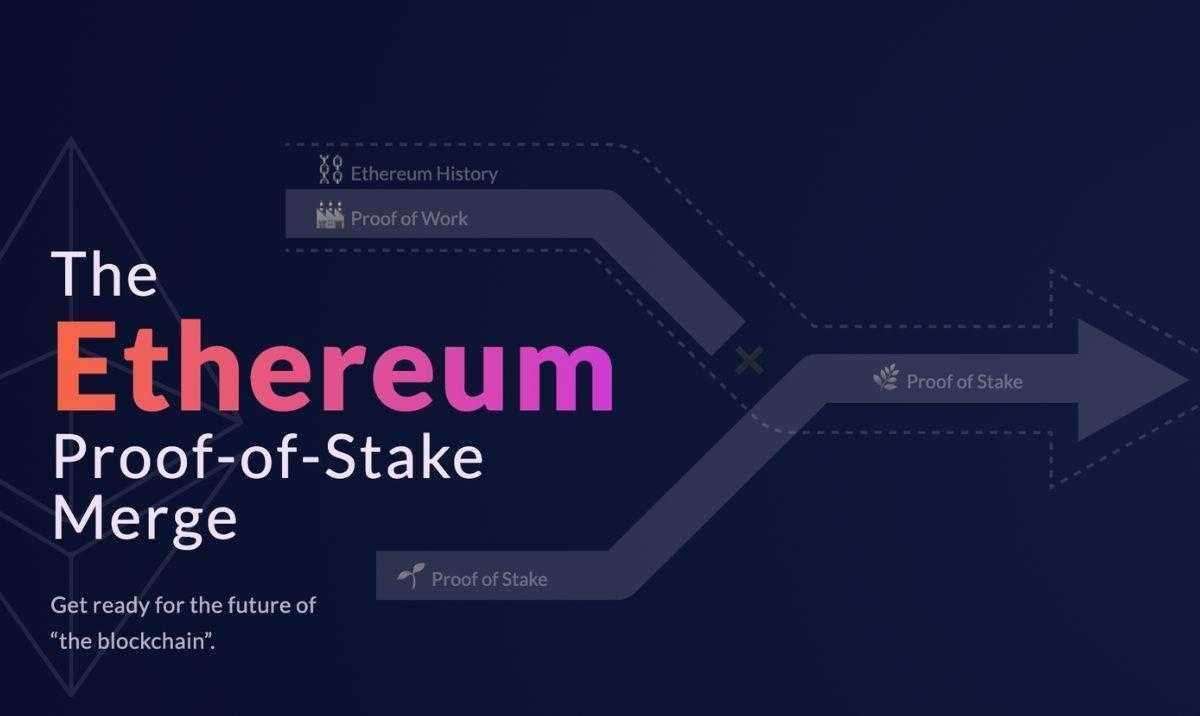Table of contents
- What is The Merge?
- What Is Proof-of-Work?
- What Is Proof-of-Stake?
- How is proof-of-stake (PoS) different from proof-of-work (PoW)?
- What date is The Merge?
- What will happen to Ethereum fees after the Merge?
- What about Ethereum transaction speed, will it increase after the Merge?
- Will the Merge increase the price of ether (ETH)?
What is The Merge?
The merge refers to the expected transition of Ethereum, the world's second-largest blockchain network, to a new system for processing transactions within the next couple of weeks.
The Merge represents the Ethereum network’s shift to proof-of-stake (PoS), for authenticating crypto transactions. This new system will replace proof-of-work (PoW), the more power-hungry mechanism pioneered by Bitcoin.
Will Ethereum fees decrease after the merge? Will the price of ether (ETH), the network’s native currency, increase? What should I know about all these?
For these and other questions, this article has got you covered:

What Is Proof-of-Work?
Proof-of-Work (PoW) is a mechanism Bitcoin uses to regulate the creation of blocks and the state of the blockchain. Proof-of-Work provides an objective way for all members of the Bitcoin network to agree on the state of the blockchain and all Bitcoin transactions.
What Is Proof-of-Stake?
Proof-of-Stake (PoS) is an alternative consensus mechanism to Proof-of-Work, developed and used by a few alternative cryptocurrencies. In the Proof-of-Stake model, stakers—the PoS equivalent of miners—lock up funds in a special smart contract. So that every time the network needs a new block, an algorithm grants a specific staker the opportunity to publish the next block. The algorithm selects the staker via lottery, depending on each staker’s percentage of total staked funds. For example, if a single staker controls 30% of all funds staked on a network, they have a 30% chance of mining the next block.
How is proof-of-stake (PoS) different from proof-of-work (PoW)?
Proof-of-stake (PoS) and proof-of-work (PoW) are different in how they decide who may record the next “block” of transactions on the network, essentially determining who's right it is.
Proof of Stake (PoS) uses randomly selected miners to validate transactions. Proof of Work (PoW) uses a competitive validation method to confirm transactions and add new blocks to the blockchain.
What date is The Merge?
The Merge, the most expected crypto event of the year, finally has an official date: Sept. 6, along with an estimated time of 7:34 a.m. ET, according to an update on the official Ethereum Foundation blog.
What will happen to Ethereum fees after the Merge?
I do not expect Ethereum transaction fees to change because of the Merge. Future network updates, like danksharding and proto-danksharding, may help to address Ethereum's high network fees, but we do not expect these updates until 2023 at the earliest.
The main salve for Ethereum’s transaction fee woes remains rollups–third-party networks like Arbitrum and Optimism that bundle up transactions and process them separately from Ethereum’s mainnet.
What about Ethereum transaction speed, will it increase after the Merge?
On average, Ethereum blocks are issued once every 13 or 14 seconds in today’s PoW system. After the Merge, PoS blocks will be issued in regular 12-second intervals. Actually, this isn't an improvement that most users will notice, and it still places Ethereum behind rival blockchain networks like Solana and Avalanche (though well ahead of Bitcoin, where a new block is mined every 10 minutes on average).
Will the Merge increase the price of ether (ETH)?
One can't really say for sure.
With so many variables and unknowns, it is impossible to predict what will happen to Ethereum’s token price because of the Merge. The Ethereum community has for years positioned the Merge as a massive upgrade to the network’s core technology. Along with addressing concerns about the network’s environmental impact, PoS will introduce a new form of utility for Ethereum’s native ether (ETH) token as staking. It will also decrease the rate at which ETH is issued.
But not everyone is sure that the Merge will boost the price of ETH. The upgrade may already be priced in by the market. There is also a risk (however small) that the Merge will run into hiccups, or that PoS will prove less secure than PoW in the long run.
NB: I published This article as the #week4 article for the Hashnode #4articles4weeks writeathon.
